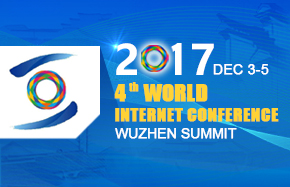Natural extension of the Belt and Road
For Latin American and Caribbean countries, China's model of globalization, based on connectivity and inclusive development, has great potential and attractiveness
After four decades of unprecedented growth, China has not only lifted hundreds of millions of people out of poverty, it has also become one of the two leading economies in the world, both in terms of GDP as well as share of world trade.
Moreover, in the last decade, China has taken a much more active role as a global actor and has become more assertive in multilateral agendas. The Belt and Road Initiative, announced by President Xi Jinping in 2013, is a key element of this new role, as it represents a new type of globalization - globalization with "Chinese characteristics".
China and Latin America and the Caribbean have boosted their relationship significantly, particularly since China entered the World Trade Organization in 2001.
A growing number of partnerships and free trade agreements in force and in negotiation - two White Papers; the China-CELAC Forum; China's incorporation to the Inter-American Development Bank as the first extra regional member in 2009, and more interest in joining the Asian Infrastructure Investment Bank and the Belt and Road Initiative are proof of this.
Since 2013, President Xi and Premier Li Keqiang have made five trips in all to Latin America and the Caribbean and visited 12 countries. Total trade between China and the LAC has increased more than 15 times between 2002 and 2017.
And the LAC is currently the second largest recipient region of Chinese foreign direct investment and third - after Africa and Central and Eastern Europe - in receiving financial assistance from China.
Chinese banks such as the China Development Bank and the China Export-Import Bank have become the largest lenders to the region, surpassing the World Bank and the Inter-American Development Bank.
In addition to the growing diplomatic, commercial and financial relations between the LAC and China, during the Belt and Road Initiative Forum for International Cooperation in Beijing in May 2017, two leaders from South America, Mauricio Macri from Argentina and Michelle Bachelet from Chile attended.
At the forum, President Xi referred to the LAC as the "natural extension" of the Belt and Road Initiative. This is also in line with several of President Macri's main objectives for his mandate - investment in national infrastructure, (bi-oceanic) connectivity between Mercosur and the Pacific Alliance, and the broader Initiative for the Infrastructure Integration of South America.
Regarding the bi-oceanic connections, this is not new, although in the light of the Belt and Road Initiative it has taken on a new dimension. In 2013 there was a proposal for a Central Bi-oceanic Railway as a result of the meeting between Bolivian President Evo Morales and President Xi, which would unite the port of Santos in Brazil with Ilo in Peru in a total distance of around 3,000 kilometers, half of which would be through Bolivian territory, in a project which is usually referred to as the "Panama Canal of the 21st century".
Panama, an important logistics hub in Latin America, not only by its bi-oceanic channel but also by its multiple air connections in the region, restored diplomatic relations with People's Republic of China in June 2018 and, since then, 28 bilateral treaties have been signed.
In addition, in the latest trip of President Xi to Panama in December 2018, it became the first country in the region to formally join the Belt and Road Initiative. Moreover, an imminent announcement is expected regarding a free trade agreement between the two countries.
In the first decade of the new millennium the relationship between the LAC and China was mainly marked by trade; whereas in this second decade energy and infrastructure investment sectors have gained in importance. Now, numerous investment projects exist in the region, from nuclear plants, lithium extraction and dams in Argentina, oil in Venezuela, hydraulic power in Ecuador, electric power in Brazil, among others.
Even in terms of digital connectivity, there is the possibility of installing a high-speed fiber optic submarine cable between China and Chile, which would be the first through the South Pacific and would transform the Andean country into a digital hub in the Southern Cone region.
In March 2018, the annual meeting of the Inter-American Development Bank was held in the Argentine city of Mendoza, which Jin Liqun, president of the Asian Infrastructure Investment Bank, also attended, and the possibility of cooperation between the two institutions was raised, especially to address the infrastructure deficit in the LAC.
The next annual meeting will coincide with the 10th anniversary of the incorporation of China in the bank and the meeting will take place in Chengdu on March 26-31, so more cooperation between the Asian Infrastructure Investment Bank and the Inter-American Development Bank can be expected.
There are currently seven countries in the region that have applied for membership of the Asian Infrastructure Investment Bank, among which Brazil has been a prospective member since its founding in 2015; Peru, Venezuela, Bolivia, Argentina, Chile and Ecuador have been prospective members since 2017.
China has focused on a dual-type strategy, in which it not onl participates in the existing post-Bretton Wood Western institutions, but at the same time proposes its own alternative and complementary ones.
China's new model of globalization, based on connectivity and inclusive development, has great potential and attractiveness for the LAC countries. Investments in infrastructure, greater connectivity, greater inclusive development - are undeniably urgent and necessary for the economic development of the region. However, it is vital that this infrastructure does not replicate past patterns of the 19th century, which focused solely on extractive and export-oriented insertion. Instead, local, national and regional economic development of an inclusive, balanced and long-term nature is needed.
On the other hand, the greatest benefit China can obtain out of involvement in the region is its building and cementing its reputation as a good articulator of this new globalization.
Therefore, in the coming decades, it will be crucial, that not only the LAC design long-term beneficial strategies together with China, but also that China take the necessary precautions to ensure its investments and projects in the region are mutually beneficial.
The author is a counselor member and deputy coordinator of the China Working Group and member of both the Asian Affairs and the Latin American Committees at the Argentine Council of Foreign Relations. The author contributed this article to China Watch, a think tank powered by China Daily. The views do not necessarily reflect those of China Daily.

(China Daily 03/05/2019 page13)


















